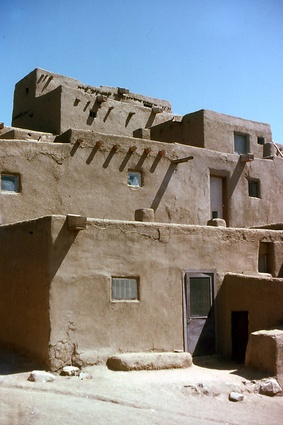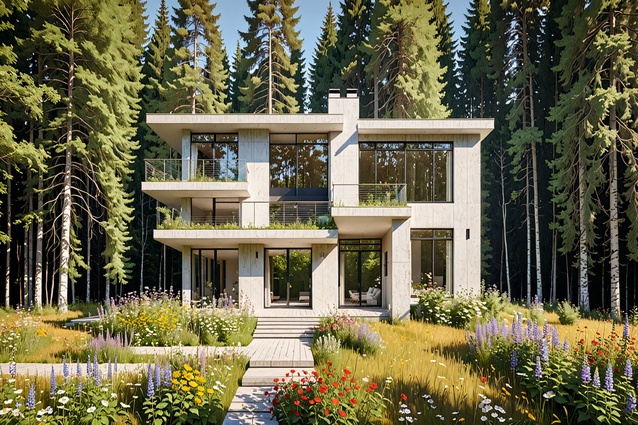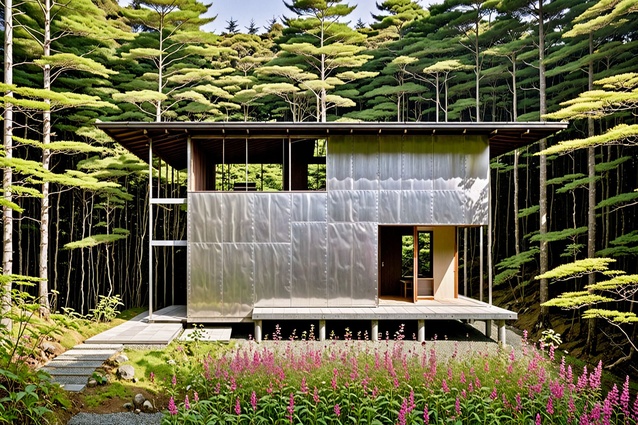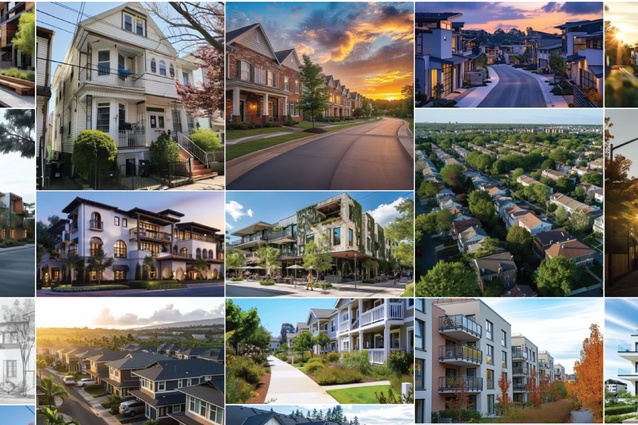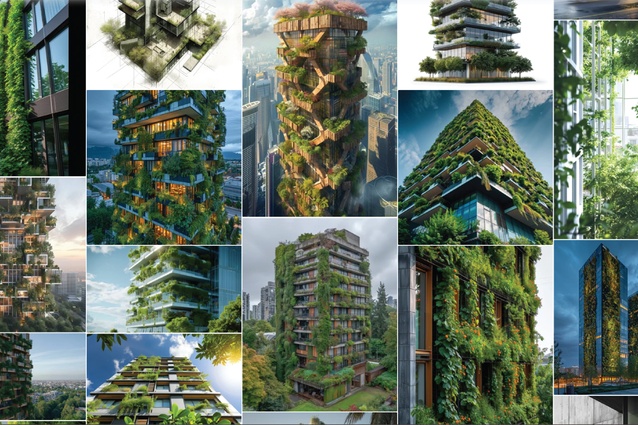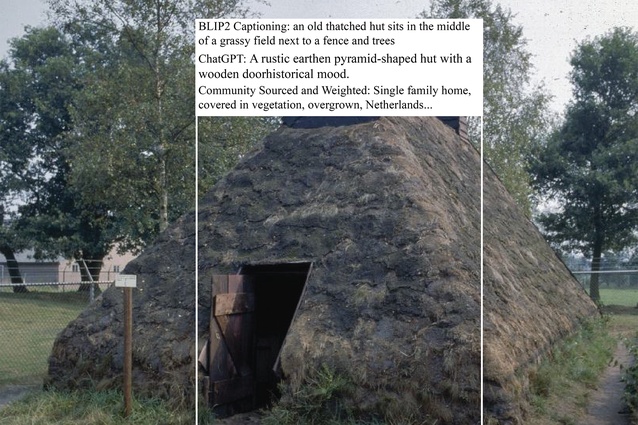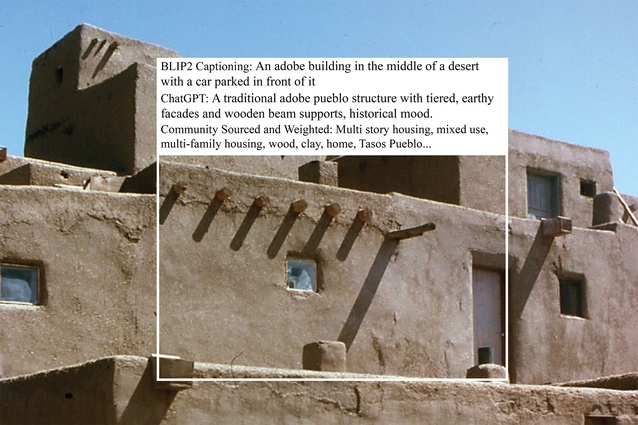Advocating for diversity and cultural integrity in architectural design through AI
Sandra Baggerman and Cas Esbach are Dutch architects whose collaborative work focusses on contemporary issues affecting the practice of architecture. ArchitectureNow’s editor, Jacinda Rogers, talks to them about the ethical challenges of AI-assisted design tools, and how the global architectural community can work together to improve AI.
How is AI most commonly used in architectural firms today?
Sandra Baggerman (SB): AI has found its place in two main areas — design input and output. On the input side, it helps spark creativity by generating imagery and assists with analysing project briefs, building regulations, and zoning laws. This lets architects make more informed choices. On the output side, AI is great at producing accurate visualisations, and it’s also useful for testing and simulating different design elements.
When did you first encounter AI, and when did you start noticing its risks?
Cas Esbach (CE): We started playing with AI image generators when they first became popular, and it was really exciting. But we quickly noticed some issues — random watermarks, artist signatures, even repeated elements in the generated images. These quirks hinted at a bigger problem: a lot of these AI tools are trained using unauthorised copyrighted material. For example, OpenAI recently had to remove over 100,000 stolen books from its training data. That’s when we realised the ethical challenges of these technologies.

What are the implications of this for architectural production, and where do you see AI’s limitations?
SB: AI’s biggest limitation in architecture comes from its training data. It relies heavily on pattern recognition, so if the dataset is biased or limited, the results reflect that.
AI tools often struggle to create designs outside mainstream modern architecture. They miss out on culturally diverse styles, and that’s a problem. Architecture is all about reflecting the nuances of different cultures and traditions. If AI can’t do that, we risk losing the diversity that makes architecture so rich.
It seems ironic that AI is supposed to enhance creativity, but it’s causing uniformity.
CE: Exactly. AI gives the appearance of boosting creativity, but it can actually lead designers into repeating mainstream trends without realising it. The problem is subtle — designers think they’re innovating, but they’re stuck within the limits of the data the AI has been trained on. If we’re not careful, this could lead to more generic designs, with unique cultural contexts being overshadowed. Some designers are already taking control by creating their own datasets or training customised AI models (LoRAs) to reflect their own styles. This helps break free from the bias of general datasets and ensures the designs stay true to their vision.
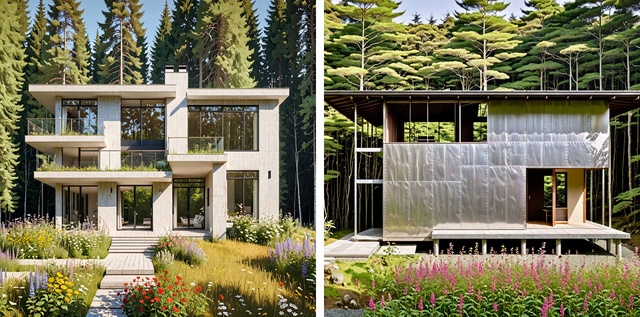
Your work advocates for creating a culturally rich dataset through the community, rather than by an office. Can you explain your approach?
SB: Instead of developing a dataset just for ourselves, we want to take a more inclusive approach. Our goal is to encourage architects, urban planners, and the public to contribute images that represent diverse architectural styles from around the world. Each image would be tagged with cultural and architectural details, creating a rich, varied dataset for AI to learn from. This way, AI-generated designs can be more sensitive to different contexts and cultures, which helps preserve architectural diversity.
How do you envision the ideal use of AI in architecture moving forward?
CE: We see a future where architects are in control of AI, using it as a tool to enhance, not limit, design possibilities. By advocating for diverse, community-built datasets, we hope architects can create designs that reflect a wide range of architectural traditions and styles. AI has massive potential, but it needs to be used ethically, with guidance and input from the design community. The focus should be on creating inclusive, context-sensitive tools that help us push architectural practice forward, not hold it back.
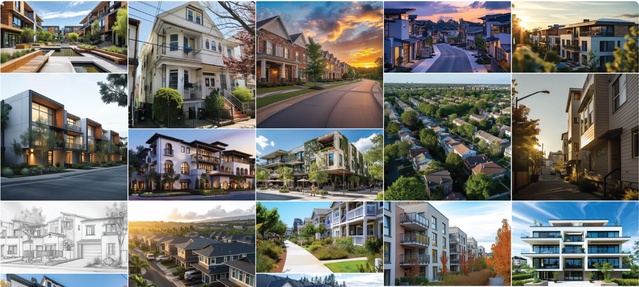
About Cas Esbach and Sandra Baggerman
Cas Esbach and Sandra Baggerman are Dutch architects motivated by architectural potential and a forward-thinking ethos. Baggerman specialises in crafting locally rooted, culturally resonant spaces that evoke emotional connections. In contrast, Esbach focuses on concept-driven, visionary designs that address large-scale, complex challenges, with a particular interest in integrating AI into architectural practice.
Together, they collaborate at the intersection of transformative design, emphasising the importance of optimism and critical engagement in architecture. Their work reflects a belief that architecture should respond to contemporary issues as well as inspire communities and foster meaningful experiences.
Cas Esbach

Cas Esbach is a Dutch licensed architect and project leader in MVRDV’s Rotterdam office. Having been with the firm since 2018, he has spearheaded a diverse array of projects all across the globe.
Most notably he has worked on the Shenzhen Terraces in Shenzhen, Tripolis Park in Amsterdam, and Valley in Amsterdam. Ranging from city block development and large-scale cultural campuses to university buildings, high-rise towers and housing, the designs exemplify a concept-driven and vision-focused approach.
Esbach prioritises efficiency, pushing boundaries, forward-thinking methods, and research-driven conceptual thinking in his work.
He holds a Bachelor’s and Master’s degree in architecture from TU Delft. Prior to joining MVRDV he worked at Derksen|Windt, Civic Projects, and Bjarke Ingels Group (BIG), and he has taught at TU Delft.
Sandra Baggerman
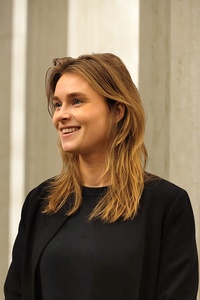
Sandra Baggerman is a Dutch licensed architect and designer at Trahan Architects in New York. She has worked on a diverse range of international projects at MVRDV, BIG, and Trahan Architects.
Her work is deeply rooted in research and concept-driven design and a belief that architecture must be grounded in a deep understanding of its local context and culture. Baggerman’s holistic method integrates local ecosystems with societal needs, fostering critical thinking while respecting the environment.
Baggerman holds a Bachelor’s and Master’s degree in architecture from T.U. Delft. She has contributed to various publications, and shared her expertise as a guest speaker, a former design tutor at T.U. Delft, and through leading workshops at the Summer School in Wuhan, China. In additon, she has served as a jury member for architecture competitions and awards.
Read more from the Future of Design series.
Cas Esbach: The AI play revolution: Rekindling creativity in architecture




